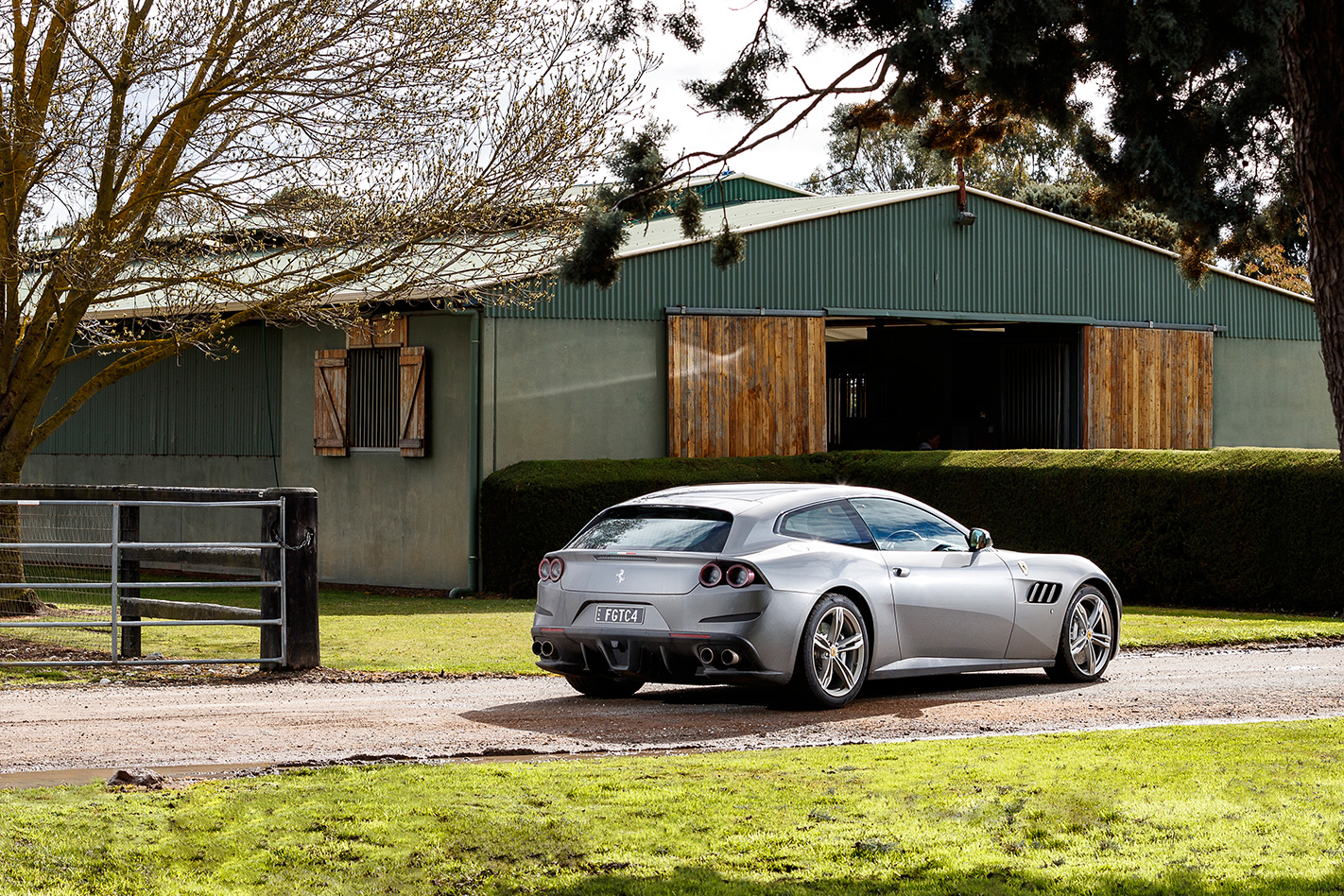THERE are many noises you expect to hear while powering a V12 Ferrari up a tight rural road, but the crack of a gunshot isn’t one of them.
Watching in disbelief as a farmer, his face mottled and purple with rage, takes stock after charging down his driveway and unloads two more shots – crack, crack – across my bow is equally high on my ‘unexpected’ list.
The gun-toting farmer finishes his performance by slowly and deliberately drawing his thumb across his veiny throat. I glean from this that he mustn’t like Ferraris.
Having arrested my attention, what follows is something of a standoff: the farmer poised at his fence line, his chest heaving and trigger finger quivering, while I sit in the Ferrari, my hands gripping the wheel tighter than normal, wondering what I’ve done to upset him.
My puzzlement is genuine; we’d been using this stretch of empty rural road for photography and I had driven past his house twice, but I wasn’t speeding. I wasn’t hooning, or sliding – though Ferrari’s latest version of Side Slip Control did make the latter tempting.
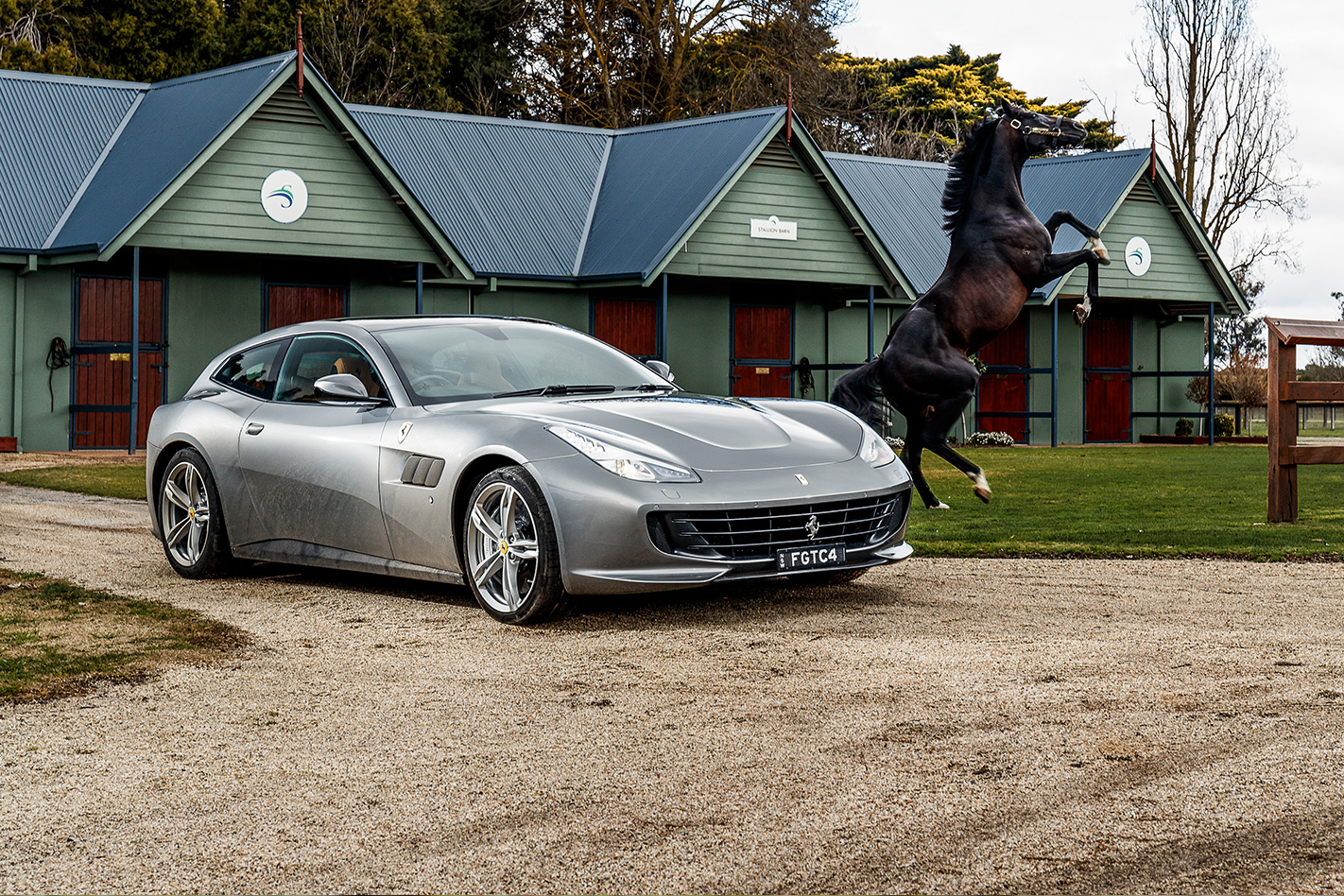
Eventually the impasse is broken when another car appears, the farmer turns on his heel and I drive away slowly, my eyes nervously glued to the rear-view mirror.
“What a shame,” I think to myself. “He totally missed the point.”
Ferrari will tell you the GTC4Lusso is ‘all-new’, but in reality, it’s a facelift. The same basic recipe from the FF remains: big naturally aspirated V12 up front, plenty of room for four in the middle, and enough load-lugging ability and versatility to satisfy even heavy packers out back.
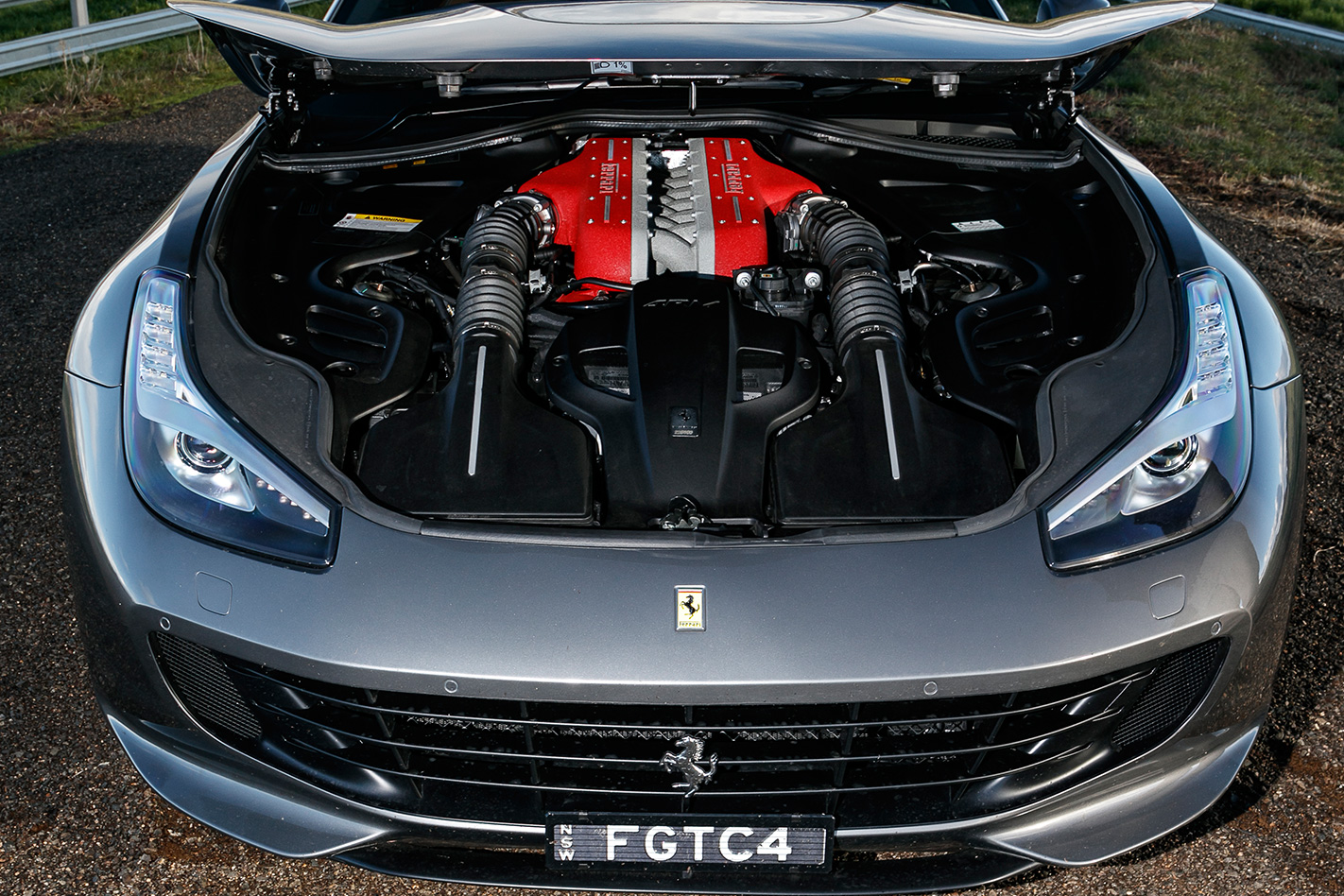
Inside, the cabin has been totally redesigned, and now boasts an eye-catching 10.2-inch infotainment screen and a new steering wheel with a smaller centre boss and revised switchgear. It’s a special place to sit; the leather seats waxy and supportive, the fit and finish exemplary, and the quality of materials top shelf.
Cabin space is up fractionally too, with rear passengers scoring 16mm more leg room to go with surprisingly comfortable bucket seats capable of swallowing 6ft adults. The back also scores air-con vents, cup-holders and USB outlets.
The mechanical changes appear more subtle, at least on paper, yet like the rest of the Lusso’s tweaks they coalesce to produce a package that’s markedly more aggressive.

Most of the grunt is sent to the rear wheels via a seven-speed dual-clutch ’box, but as in the FF, the Lusso uses Ferrari’s unique take on four-wheel drive. Dubbed 4RM EVO, the system has no mechanical link between the front and rear axles, and instead uses a power transfer unit to take drive directly from the crank, which is then split between the front wheels by a pair of clutches.
The big news, however, is the addition of four-wheel steering to improve high-speed agility and importantly, low-speed manoeuvrability, which is handy in a low-slung sportscar that’s almost as long as an S-Class (overall length is 4922mm).
Yet despite the new tech, this remains a car dominated by its engine. In this age of forced induction it’s easy to forget just how special a big-capacity, free-breathing unit can be at full noise and Ferrari’s 6.3-litre V12 is a triumph.
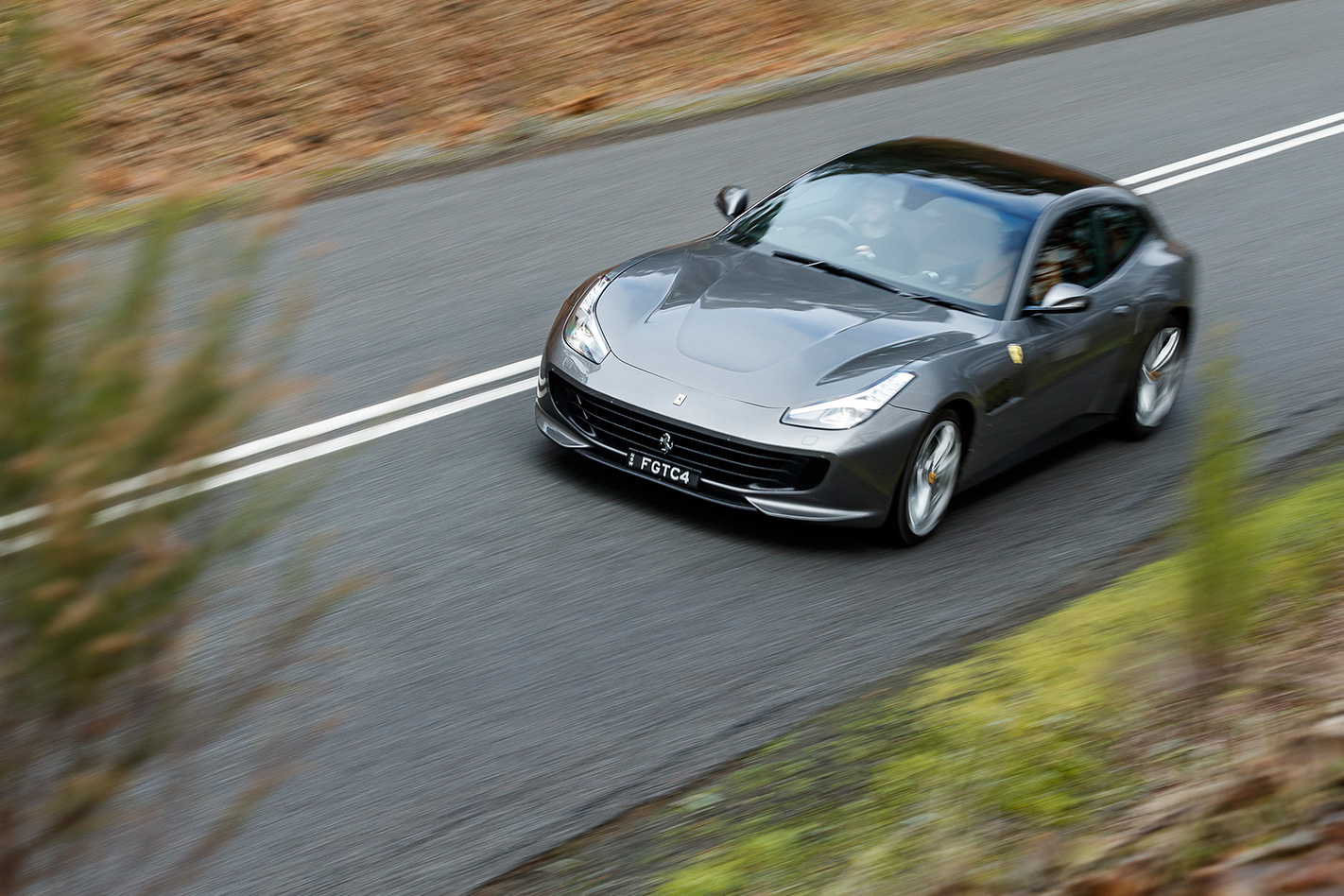
Ferrari claims 0-100km/h in 3.4sec (three tenths quicker than FF) and on bumpy Aussie roads, it feels every bit that fast, the sensation of speed enhanced by the scream of 12 cylinders working at fever pitch.
It’s the noise, I’m sure, that drove the farmer batty. Ferrari has tuned the exhaust to be quieter on start up (the FF was an anti-social old thing), but with the baffles wide open, the Lusso emits an operatic howl that can be heard for miles.
There’s plenty of handling nous to back up it up too, despite the Lusso’s GT positioning. Admittedly, throw it at a slew of tightly stacked hairpins and you’re reminded this is a big, heavy car (kerb weight is 1920kg), but through high-speed sweepers on open, flowing roads, the Lusso is in its element. There’s plenty of bite from the Pirelli P Zeros (245/35R20 front and 295/35R20 rear), the nose points accurately and the rear provides that reassuring breath of bodyroll as the weight shifts to the outside tyre.
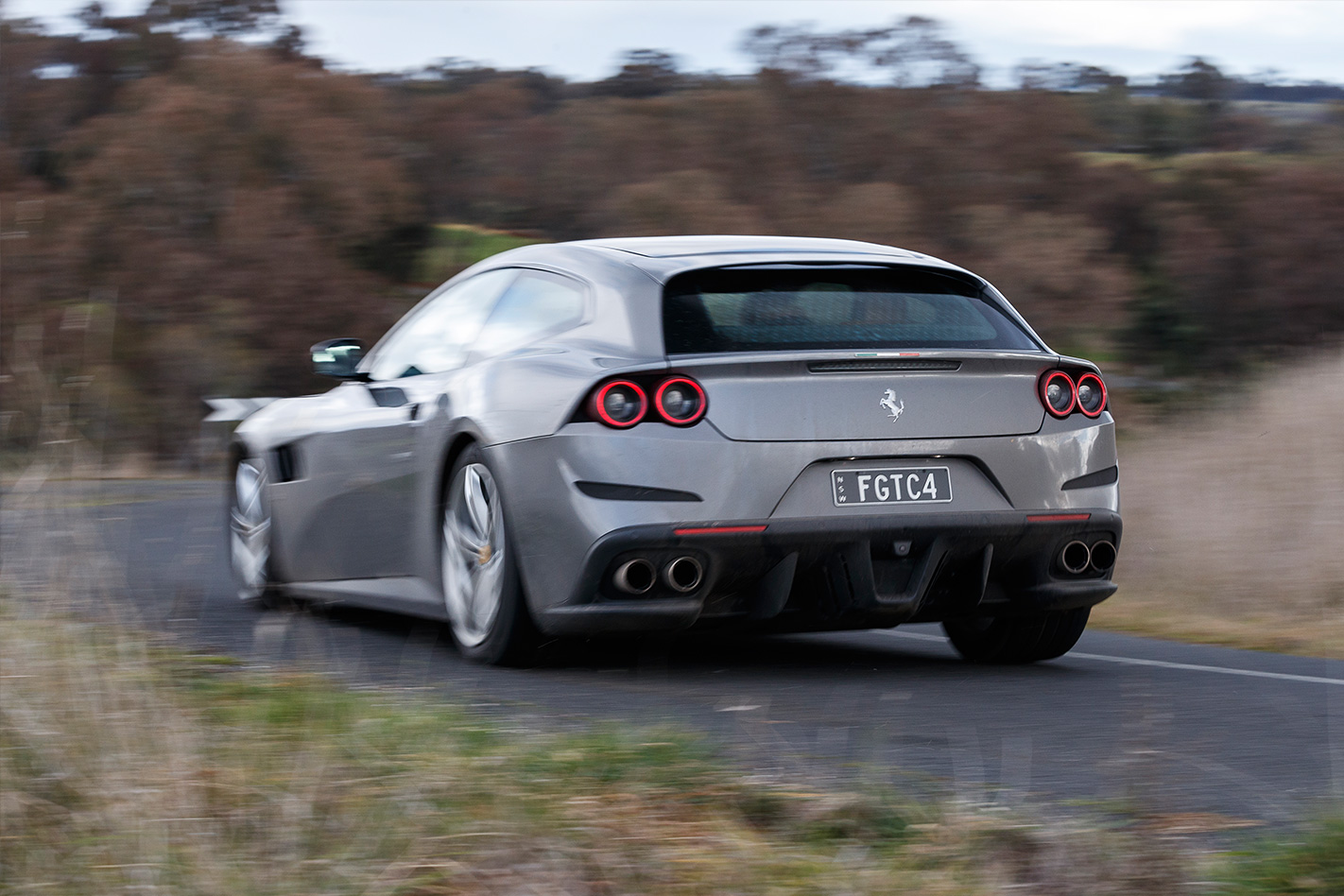
It will oversteer, and on wet roads, heavy-handed use of the throttle results in unsettling armfuls of opposite lock with Sport mode engaged on the manettino, but despite its prodigious speed, the Lusso lacks the adjustability and agility that defines Maranello’s best. Another niggle is occasional tramlining as the front rubber chases the camber and surface irregularities on some roads.
Where the Lusso stands alone, however, is when it comes to cross-country comfort. A well-controlled ride with decent wheel travel and a degree of bodyroll, plus improved NVH and reduced suspension noise, combine to make it a sublime long-distance tourer.
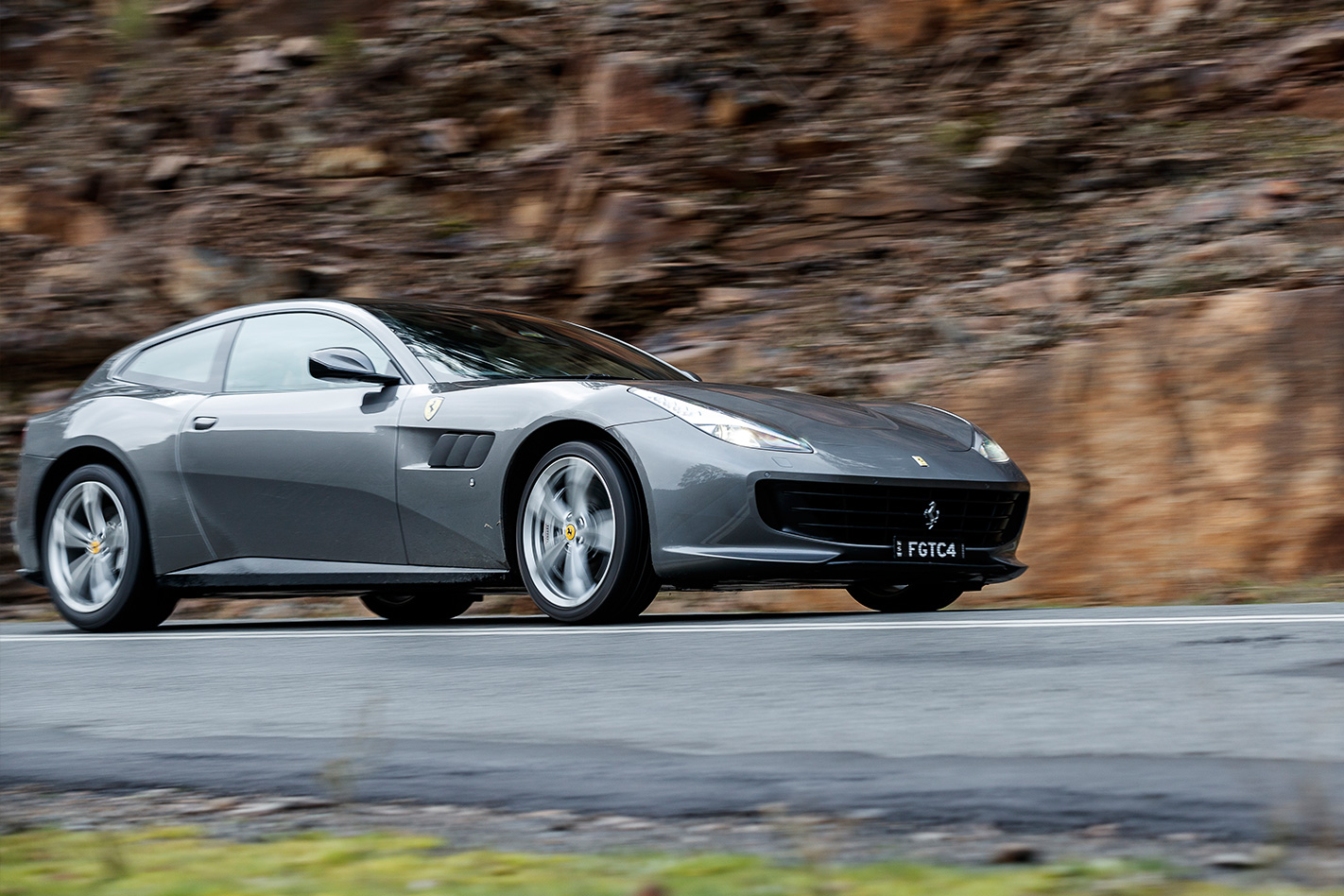
I can think of nothing that is capable of lugging four adults great distances which is this effective, this engaging or this exciting when driven hard.
It feels special, sophisticated, exotic and delivers a notable step forward over the FF.
Why Ferrari feels the need to build an SUV when the Lusso so effortlessly blends high-octane thrills with luxurious practicality is beyond me.
